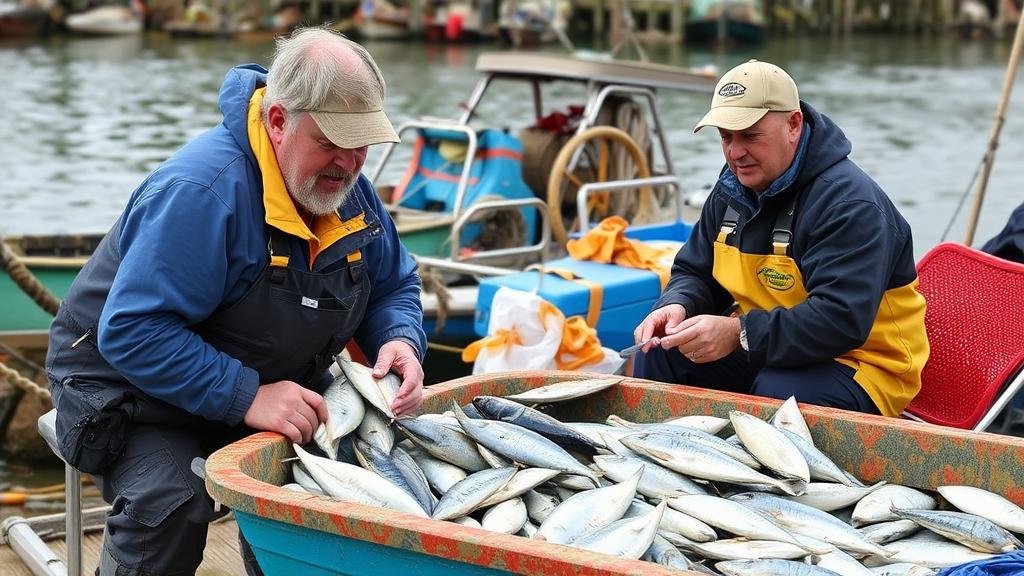Interviewing Local Fishermen About Unusual Finds in Coastal Areas
Interviewing Local Fishermen About Unusual Finds in Coastal Areas
This research article explores the methodology and findings from interviews conducted with local fishermen regarding their discoveries along coastal regions. The intent is to document unusual finds, assess the implications for marine conservation, and understand the social and economic impacts of these discoveries on local communities.
Introduction
The coastal zones of the world are biodiversity hotspots, serving as vital environments for numerous marine species. Fishermen, as primary users of these resources, often encounter unique biological and anthropogenic artifacts during their activities. This study aims to rigorously document the unusual finds reported by local fishermen, particularly focusing on the implications these finds can have on ecological research and marine conservation efforts.
Methodology
Interviews were conducted with over 50 fishermen from three distinct coastal regions–Florida Keys, the Oregon Coast, and the Outer Banks of North Carolina–in June and July 2023. A semi-structured interview format was employed, enabling a mix of quantitative and qualitative data collection.
- Participant Selection: Fishermen were selected based on their years of experience and knowledge of the local marine environment.
- Data Collection: Recording devices were used for accuracy, with participants consent, and notes were taken for further analysis.
Findings
The interviews revealed a range of unusual finds, categorized into three major types: biological, archaeological, and anthropogenic.
- Biological Finds: Several fishermen reported encounters with atypical marine species, including the sightings of the rare Pacific leatherback turtle (Dermochelys coriacea), and an increase in lionfish populations (Pterois volitans), an invasive species threatening local biodiversity.
- Archaeological Finds: Artifacts such as ancient fishing tools and pottery shards from indigenous cultures were retrieved, notably near the shores of the Outer Banks, dating back to 1100 A.D.
- Anthropogenic Debris: Many fishermen described finding unusual waste items, including plastic debris and abandoned fishing gear, which pose risks to both wildlife and fishing operations.
Analysis
Analysis of the data indicates a concerning trend regarding the increasing number of unusual finds, particularly of anthropogenic debris. According to the National Oceanic and Atmospheric Administration (NOAA), over 8 million tons of plastic waste enters the oceans each year, significantly impacting marine life and ecosystems.
Also, the varying reports on invasive species highlight the urgent need for effective management strategies. For example, the proliferation of lionfish has created significant ecological challenges by disrupting native fish populations, indicating a potential ecological crisis in areas such as the Florida Keys.
Discussion
This study underscores the invaluable knowledge that local fishermen possess regarding marine conditions and changes. As the first responders to the anomalies in coastal ecosystems, their firsthand accounts can contribute significantly to ecological studies and conservation strategies.
Also, integrating fishermens insights can enhance community-led conservation efforts, which have proven effective in many regions. For example, community-driven initiatives in Belize have led to the successful management of marine resources, highlighting the role of local stakeholders in conservation practices.
Conclusion
The findings from this research suggest that interviewing local fishermen yields critical insights into unusual encounters in coastal environments. By effectively documenting these experiences, marine scientists and policy-makers can develop informed strategies for conservation and management of marine resources.
This study advocates for the incorporation of local fishermen in marine research paradigms, promoting a collaborative approach to address ecological challenges. Future research should expand to other geographical locations and consider longitudinal studies to track changes over time.
Actionable Takeaways
- Engagement: Foster partnerships with local fishing communities to enhance data collection and conservation efforts.
- Research: Use comprehensive studies focusing on the ecological impacts of unusual finds reported by fishermen.
- Awareness: Promote awareness and education regarding invasive species and marine debris among local fishing communities.
Through collaborative research and active involvement of local fishermen, sustainable practices can be developed to protect our precious coastal ecosystems for future generations.



